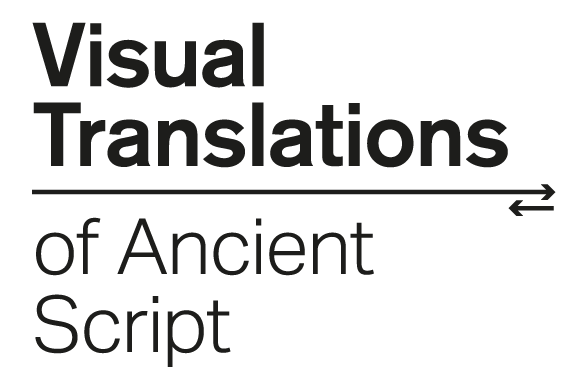Saturday Art Class
Whilst some of the other artefacts were still being developed the Visual Translations project ran a session for the Saturday Art Club group at Sheffield Hallam University with student between 14-16 years old. The session introduced the students to some basic knowledge about Linear B logograms and the script was contextualised in terms of how it primarily depicts and describes items of economic and social importance, based on what can be verified by the archaeological records. The session enabled the students experience the scripts as a material practice in terms of how the symbols might be constructed with ink and paper, but the underlying objective was to engage them with the ancient human practice of symbolic meaning making.
The students were given a mini-brief:
Linear B Logogram brief
1. Choose 3-5 of the Linear B logograms and start copying them in ink on paper. Look closely at the individual signs and think about in which order you think the lines may have been drawn originally. Try out different approaches until you get a certain fluidity in your stroke.
2. Linear B Logograms symbolize things that were socially and economically important to their ancient society. Do some ideas generation with a partner and come up with 10 things which you think are important in your society. Design your own symbols and draw them out with ink on paper.
3. From your own symbols, pick your three favourites and transfer your new ‘Linear B’ logograms onto the coloured vinyl. Cut them out and mount them onto you squares of Perspex.
4. Share with the group why these symbols mean something to you and reflect on what they mean in contemporary society.
This session was part of the projects aim to explore how ancient script might be used to explore how symbols which are part of our contemporary social-semiotic are constructed and how their meaning is transmitted to us.
Archaeology can grant us access to our history by allowing us encounters with remnants of the past. How these remnants are translated for us, read by us and what we believe that they tell us is intimately tied up with the context of our own contemporary culture. This makes any interaction with history also a potential interaction with the present and future. Any ‘reading’ of the past, is also a reflection of the present (Gamble 2001) (Gere 2009) (Hayden1993). The aim was to use these elements to provide a potential starting point for reflections on contemporary societal narratives and how our contemporary social semiotic is shaped
by economics.

